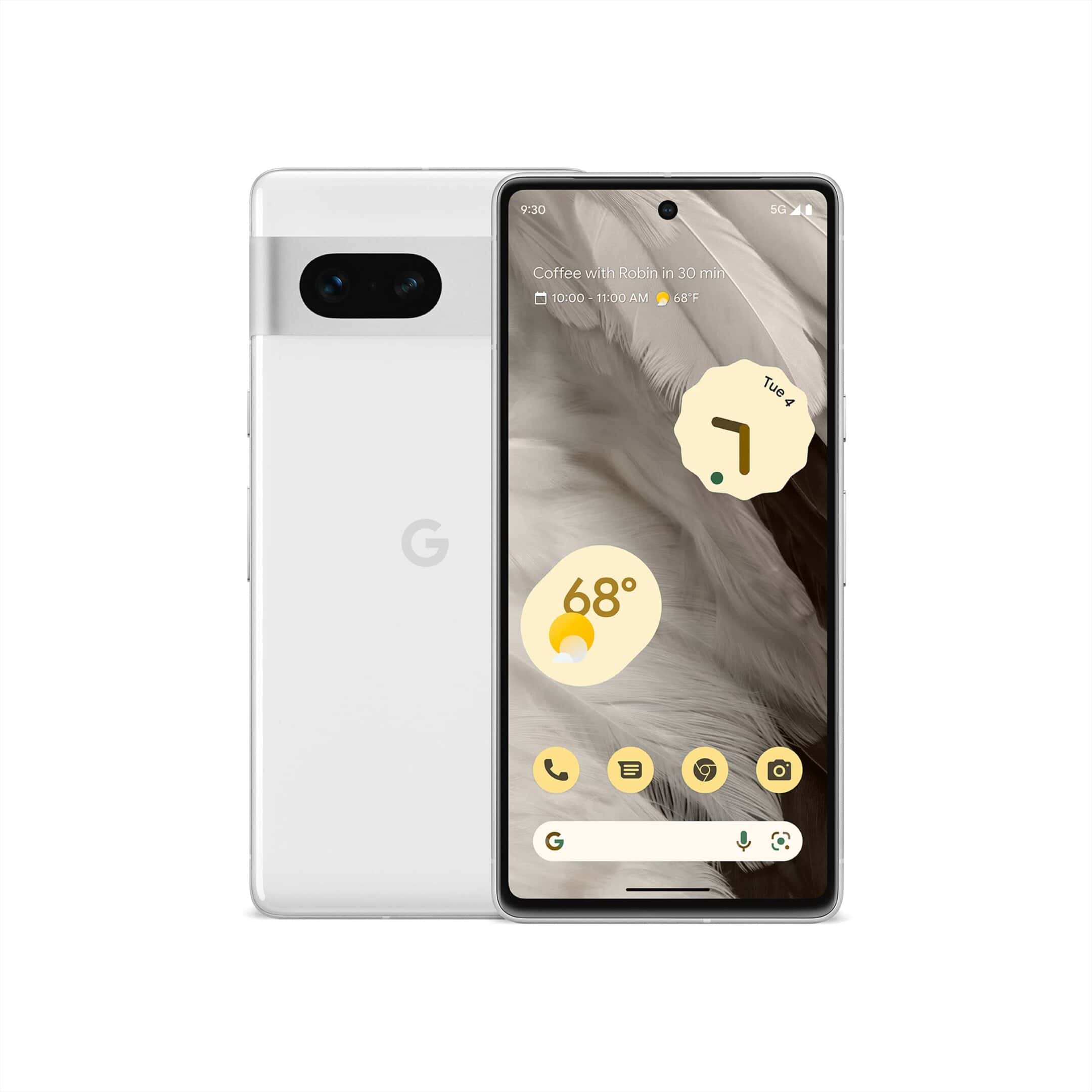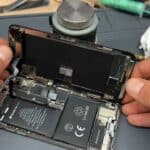Google’s Pixel lineup continues to evolve with the introduction of the Pixel 7a alongside the Pixel 7. These smartphones offer impressive features at different price points. The Pixel 7a packs many of the Pixel 7’s capabilities into a more affordable package, making it an attractive option for budget-conscious consumers.
The Pixel 7 and 7a share many similarities, including the Tensor G2 chip and advanced camera features. However, key differences set them apart. The Pixel 7 boasts a larger 6.3-inch display compared to the 7a’s 6.1-inch screen. This size difference may impact user preference and portability.
Both phones deliver solid performance for everyday tasks and photography. The Pixel 7 offers some premium features like wireless charging and a more refined design. The 7a, while slightly smaller, provides excellent value with its lower price point of $499.
Google Pixel 7 vs. Pixel 7a: A Detailed Comparison
Google’s Pixel 7 and Pixel 7a are both excellent smartphones with a lot to offer. But which one is right for you? This detailed comparison will help you decide.
Key Differences at a Glance
| Feature | Pixel 7 | Pixel 7a |
|---|---|---|
| Price | From $599 | From $499 |
| Display | 6.3-inch 90Hz OLED | 6.1-inch 90Hz OLED |
| Main Camera | 50MP | 64MP |
| Ultrawide Camera | 12MP | 13MP |
| Telephoto Camera | 8MP (on Pro model) | None |
| Battery Life | All-day | All-day |
| Charging | 30W wired, 23W wireless | 18W wired, 7.5W wireless |
| Special Features | Face unlock, Macro Focus mode | None |
Design and Display
Both phones sport a similar design with the signature Pixel camera bar on the back. The Pixel 7 has a slightly larger 6.3-inch display compared to the Pixel 7a’s 6.1-inch display. Both offer a smooth 90Hz refresh rate for fluid scrolling and animations. However, the Pixel 7’s display gets slightly brighter.
Camera
While the Pixel 7a boasts a higher resolution 64MP main camera sensor, the Pixel 7 generally produces more consistent image quality, especially in low light. The Pixel 7 also offers a telephoto lens on the Pro model, which the 7a lacks. Both phones excel in computational photography, offering features like Night Sight, Portrait Mode, and Magic Eraser.
Performance and Battery Life
Both phones are powered by Google’s Tensor G2 chip and offer similar performance in everyday tasks. Battery life is also comparable, with both phones lasting through a full day of moderate use. However, the Pixel 7 supports faster wired and wireless charging.
Other Features
The Pixel 7 has a few extra features up its sleeve, including face unlock and a Macro Focus mode for close-up shots. It also has slightly better haptics and speakers. The Pixel 7a, on the other hand, is IP67 rated for dust and water resistance, while the Pixel 7 is only IP68 rated.
Price and Value
The Pixel 7a is the more affordable option, starting at $499. The Pixel 7 starts at $599, with the Pro model costing more. Ultimately, the best choice depends on your needs and budget. If you want the best possible camera and features, the Pixel 7 is the way to go. But if you’re looking for a great value, the Pixel 7a is an excellent choice.
Key Takeaways
- Both phones feature the Tensor G2 chip and advanced camera capabilities
- The Pixel 7 has a larger display and premium features like wireless charging
- The Pixel 7a offers similar performance at a more affordable price point
Design and Build Quality
The Google Pixel 7 and 7a share design elements but differ in materials and size. Both phones offer durability and color options to suit various preferences.
Materials and Durability
The Pixel 7 boasts a premium build with an aluminum frame and Gorilla Glass Victus protection on the front. Its back panel uses Gorilla Glass as well. The Pixel 7a opts for a polycarbonate back to reduce costs. Both devices feature IP68 water and dust resistance.
The Pixel 7’s glass and metal construction gives it a more luxurious feel. It’s heavier but more resistant to scratches. The 7a’s plastic back is lighter and less prone to shattering. However it may show wear over time.
Ergonomics and Dimensions
The Pixel 7 is slightly larger and heavier than the 7a. It measures 155.6 x 73.2 x 8.7 mm and weighs 197g. The 7a is more compact at 152.4 x 72.9 x 9.0 mm and 193g.
Both phones have curved edges for comfort. The 7a’s smaller size may suit users with smaller hands. The Pixel 7’s extra heft gives it a more substantial feel in hand.
The camera bar design is present on both models. This distinctive feature helps stabilize the phones when placed on flat surfaces.
Color Variants
Google offers the Pixel 7 in Obsidian, Snow, and Lemongrass colors. The Pixel 7a comes in Charcoal, Snow, Sea, and Coral options.
The Pixel 7’s colors have a more muted, premium look. The 7a’s palette includes brighter choices like Coral. This gives users more expressive options.
Both phones feature a two-tone design. The camera bar contrasts with the main body color. This adds visual interest and helps the devices stand out.
Display and Visuals
The Google Pixel 7 and Pixel 7a offer top-notch displays with some key differences. Both phones feature OLED technology but vary in size and performance.
Screen Specifications
The Pixel 7 boasts a 6.3-inch display while the Pixel 7a has a slightly smaller 6.1-inch screen. Both phones share the same resolution of 2400 x 1080 pixels. This results in a higher pixel density for the 7a due to its smaller size.
The Pixel 7 uses Corning Gorilla Glass Victus for added durability. The 7a likely uses an older version of Gorilla Glass but still offers good protection. Both screens deliver vibrant colors and deep blacks thanks to OLED technology.
Refresh Rate and Clarity
Both phones feature a 90Hz refresh rate. This provides smoother scrolling and more fluid animations compared to standard 60Hz displays. The higher refresh rate enhances the overall visual experience.
The Pixel 7 has a slight edge in brightness. It can reach higher peak levels which improves outdoor visibility. The 7a still offers good brightness for most situations.
Both screens support HDR content. This allows for better contrast and more vivid colors when viewing compatible videos or photos.
Camera System
The Pixel 7 and Pixel 7a offer impressive camera setups with some key differences. Both phones feature advanced computational photography and AI-powered features to enhance image quality.
Rear Cameras
The Pixel 7 boasts a 50MP main camera with a large sensor for excellent low-light performance. It’s paired with a 12MP ultrawide lens for capturing wider scenes.
The Pixel 7a surprises with a 64MP main camera. This higher resolution allows for more detailed shots and improved digital zoom. It also includes a 13MP ultrawide camera.
Both phones offer optical image stabilization (OIS) on the main camera. This helps reduce blur in photos and videos. The Pixel 7 and 7a can record 4K video at 60 frames per second.
Front Camera and Features
The Pixel 7 and 7a share the same 10.8MP front-facing camera. It can record 4K video and offers features like Night Sight for low-light selfies.
Both phones include Google’s AI-powered photo editing tools. The Magic Eraser can remove unwanted objects or people from photos. Photo Unblur sharpens blurry images even if they were taken on other devices.
The Pixel 7 and 7a support up to 8x digital zoom using Google’s Super Res Zoom technology. This provides decent results without the need for a dedicated telephoto lens.
Performance and Hardware
The Google Pixel 7 and 7a share many hardware features but differ in key areas. Both phones use the Google Tensor G2 chip and run Android 13. Their main differences lie in RAM storage and battery capacity.
Processor and Speed
Both the Pixel 7 and 7a use Google’s custom Tensor G2 chipset. This processor offers strong performance for everyday tasks and gaming. The Tensor G2 excels at AI and machine learning tasks.
The Pixel 7 slightly outperforms the 7a in benchmarks. It scores 813,114 on AnTuTu v9 while the 7a reaches 765,281. On Geekbench 5.1 the Pixel 7 scores 3,288 versus 3,191 for the 7a.
Both phones support 5G and LTE networks. They handle multitasking smoothly and run demanding apps with ease.
Memory and Storage Options
The Pixel 7 offers more RAM and storage choices than the 7a:
- Pixel 7: 8GB RAM, 128GB or 256GB storage
- Pixel 7a: 8GB RAM, 128GB storage only
More RAM helps with multitasking and app performance. The extra storage option on the Pixel 7 benefits users who need more space for photos videos and apps.
Neither phone has a microSD slot for expandable storage. Cloud storage can help offset local storage limits.
Battery Life and Charging
Battery specs for each model:
- Pixel 7: 4355 mAh battery
- Pixel 7a: 4385 mAh battery
The Pixel 7a has a slightly larger battery despite its smaller size. Both phones typically last a full day on a single charge with moderate use.
Charging capabilities:
- Pixel 7: 30W wired, 20W wireless
- Pixel 7a: 18W wired, 7.5W wireless
The Pixel 7 charges faster both wired and wirelessly. This can be handy for quick top-ups during the day.
Both phones support reverse wireless charging to power up accessories like earbuds.
Frequently Asked Questions
The Pixel 7 and Pixel 7a differ in key specs like camera, battery, screen size, and hardware. These differences impact performance and user experience.
What are the camera specifications differences between the Pixel 7 and the Pixel 7a?
The Pixel 7a features a 64-megapixel main camera. The Pixel 7 has a 50-megapixel main sensor.
For ultrawide shots, the Pixel 7a uses a 13-megapixel lens. The Pixel 7 has a 12-megapixel ultrawide camera.
Both phones use Google’s advanced image processing. This helps deliver high-quality photos across various lighting conditions.
How does the battery life of the Pixel 7 compare to that of the Pixel 7a?
The Pixel 7 has better battery life than the Pixel 7a. It scores an endurance rating of 96 hours.
The Pixel 7a lasts for 76 hours in similar tests. This difference may impact heavy users who rely on their phone throughout the day.
In terms of screen size, how does the Pixel 7 differ from the Pixel 7a?
The Pixel 7 has a 6.3-inch display. It’s slightly larger than the Pixel 7a’s 6.1-inch screen.
Both phones use OLED technology for vibrant colors. The Pixel 7 offers more screen real estate for content consumption and multitasking.
Could you highlight the primary differences in hardware between the Pixel 7 and the Pixel 7a?
Both phones use the Google Tensor G2 chipset. This ensures similar processing power.
The Pixel 7 has a more premium build. It uses aluminum for its frame and Gorilla Glass Victus for the screen.
The Pixel 7a opts for a plastic frame. This makes it lighter but less durable than its pricier sibling.
What are the support longevity expectations for the Pixel 7a compared to the Pixel 7?
Google typically offers similar software support for its Pixel devices. Both phones should receive Android updates for about three years.
Security patches may continue for an additional two years. This ensures both devices stay protected against new threats.
How do the Pixel 7 and Pixel 7a differ in overall performance and speed?
The Pixel 7 and 7a share the same Tensor G2 chip. This results in comparable performance for most tasks.
The Pixel 7 might edge out in sustained performance. Its larger body allows for better heat dissipation during intensive tasks.
Day-to-day use should feel snappy on both devices. Users may notice differences only in demanding scenarios like gaming or video editing.






